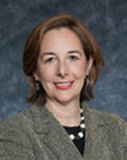By Mary Baily Wieler

Fundraising is increasingly a major source of revenue for museums, and museum administrators are working hard to put the philanthropy of their communities to good use. Unfortunately, even with the best intentions, sometimes gifts fall through the cracks. No museum is immune to the occasional mistake while fundraising, but getting it right can make a tremendous difference in your year-end results.
Many museums have just closed their fiscal-year-end books, so MTA thought this would be a good opportunity to provide strategies to avoid traps as 2018 budgets begin.
In the article below, learn about common faux pas made by even the most successful museums, and discover strategies for recovering from these errors as well as tips for avoiding them altogether.
Staff Oversight
It is, however, better to avoid these administrative errors altogether. Development committee oversight and personalized solicitations from museum leaders can help. While institutional databases are now charged with the challenge of keeping track of donors, members of the Board can use their connections to keep records up-to-date. Nonetheless, it is important to invest in good donor management software to ensure that giving entities are kept distinct: individuals, donor-advised funds, corporations and foundations can be linked when merited. Good software enables easy access to records. Additionally, providing thorough staff training can ensure administrators are well versed in the proper acknowledgment protocols for each type of gift.
One more tip: I have found that reviewing each solicitation before signing it is a good way to keep track of the giving trends of my high-level donors. Reviewing these appeals can be an opportunity to catch changes that my staff may not know about before mailings are sent, and sometimes are a way for me to keep up-to-date too. Finally, I often add a personal handwritten message to each donor.
Keep it Personal
With the increase and improvement of databases and communication methods, donors receive hundreds of requests every year. Do your research; does the donor have a history of giving to arts & cultural organizations? (Click HERE to read more about prospect research). Many of these asks are unsolicited, meaning that a successful request must stand out from the crowd. It is better to cold-call someone than to inundate them with impersonal mailings and emails. Better yet, ask a board member with or without a connection to a giving entity to pick up the phone. In either scenario, invite the prospect to your museum to see programs first hand before making the ask.
Once the initial gift is secured, fundraisers cannot become complacent. The development staff and committee may wrongfully assume that a major donor will give their standard annual gift without a personal solicitation, which can risk alienating a supporter. It is important to consistently demonstrate to donors how much you value their relationship. Invite them on a behind the scenes tour of the museum or to a lecture. Again, personalize these annual appeals and pick-up the phone and say THANK YOU.
Update your Donors
Then, the unthinkable happens. Maybe there is a leadership change, or a maintenance emergency. Maybe the program just wasn’t working. For whatever reason, the project is inevitably cancelled, and your relationship with that donor is put at risk.
It is often tempting to silence communications in times of uncertainty or crisis, but keeping quiet makes it increasingly likely that the donor will hear about the change from another source. A face-to-face meeting with the donor is the best approach here, and can provide reassurance at the solidity of the museum. No matter the cause of the change, appearing confident that the museum made the right decision, soliciting advice and feedback from the donor and being prepared with new ideas for use of their gift can reinforce faith in the museum leadership’s ability to achieve its mission.
Gifts of Objects
Maintain a Paper Trail
The same rules apply when cultivating a new board member. Financial expectations need to be specifically addressed upfront during the cultivation process. Many successful museums share their Board Contract that enumerates these expectations with board candidates, so there is no misunderstanding down the road. With clear giving expectations, boards can avoid alienating their newest members at that crucial time.

 RSS Feed
RSS Feed